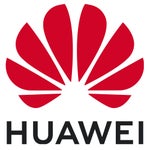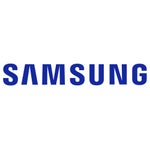News
iPhone 17 eSIM: Apple Reportedly Removing SIM Slot in EU, Following US Model
iPhone 17 eSIM: Apple Reportedly Removing SIM Slot in EU, Following US Model
Apple continues to innovate its smartphone lineup by ditching physical SIM card slots and embracing the future of connectivity with eSIM technology. After successfully implementing eSIM-only iPhones in the US starting with the iPhone 14 series, recent insider reports suggest that Apple plans to extend this shift to the European Union (EU) market with the upcoming iPhone 17 family. This major change is supported by training requirements for Apple Authorized Resellers across Europe, preparing them to handle eSIM activations ahead of the device launch. With the iPhone 17 launch event scheduled for September 9, 2025, all signs point to Apple fully adopting eSIM in key global markets, signaling a bold move towards streamlined, secure, and flexible mobile connectivity.
What is eSIM and Why Is Apple Moving Towards It?
An eSIM (embedded SIM) is a programmable digital SIM integrated directly into a device, eliminating the need for a physical SIM card. Apple first introduced eSIM technology in earlier models but took the bold step with the iPhone 14 by removing physical SIM slots in the US market, leading to benefits such as:
-
Easier carrier switching and activation to support multiple numbers
-
Enhanced device waterproofing and design flexibility by removing the SIM tray
-
Improved security through embedded hardware over replaceable cards
Embracing eSIM globally aligns with industry trends towards more seamless connectivity and efficient hardware designs.
SIM Slot Removal Confirmed in the EU
Apple Authorized Resellers throughout the European Union are required to complete comprehensive eSIM activation and support training through Apple’s internal SEED app by September 5, 2025. This training deadline, mere days before the iPhone 17 launch on September 9, confirms that the physical SIM card slot will be removed from all iPhone 17 models sold in the EU, aligning with the US market’s eSIM-only approach. Retail staff will be fully prepared to assist customers with eSIM activations to ensure a smooth transition to the new SIM-free devices.
How Apple is Preparing Its Retail Workforce
The training covers eSIM activation procedures, troubleshooting, and customer communication, ensuring that both Apple Stores and Apple Authorized Resellers can provide thorough support. Access to this training through the SEED app—Apple's proprietary employee platform—suggests Apple's commitment to a global rollout of eSIM-only iPhones. For detailed guidance on eSIM setup and management, customers can consult Apple's official eSIM support page, which offers comprehensive instructions on using eSIM on the iPhone.
Impact on Consumers in the EU and Globally
Removing the SIM slot could be met with mixed reactions:
-
Pros: Enhanced device slimness, improved waterproofing, simpler carrier management, and future-proof tech adoption.
-
Cons: Potential initial confusion for users unfamiliar with eSIM technology, dependency on carrier support for eSIM activation, and potential challenges for international travelers.
If Apple follows suit globally (barring regional exceptions), this could mark a significant shift in how users interact with mobile devices worldwide.
Possible Exceptions and Regional Variations
While the EU seems set for the SIM slot removal with iPhone 17, some regions—most notably China—might retain physical SIM slots due to regulatory preferences or market demands. Apple's launch strategy could therefore include localized configurations to meet diverse market needs.
Technical and Design Reasons Behind Removing the SIM Slot
One rumored driver behind this move is the ultra-slim design planned for the iPhone 17 Air, which reportedly requires eliminating the SIM tray to achieve extreme thinness. Beyond aesthetics, removing physical SIM components frees internal space for larger batteries or enhanced hardware, aiding Apple's push for sleeker, more efficient devices.
What to Expect at the iPhone 17 Launch Event
The upcoming event on September 9, 2025, set to unveil the iPhone 17 lineup, will likely cement Apple's eSIM-focused strategy. The event may showcase:
-
Full details on the SIM slot removal in various regions
-
Device variants optimized for eSIM-only connectivity
-
Enhanced software features supporting multi-line eSIM usage
-
New hardware innovations integrating the eSIM platform deeply into iOS
Conclusion
Apple’s reported removal of the physical SIM card slot in iPhone 17 models sold across the EU signals a decisive step towards a fully digital SIM future. With the US market already embracing eSIM-only devices, extending this technology globally reflects Apple’s commitment to delivering streamlined, secure, and flexible mobile experiences. Preparation through employee training ensures customers will receive the assistance they need to navigate this transition smoothly. Regional exceptions such as China remain possible, but the trend is clear: the era of the physical SIM card is rapidly coming to an end.
Related Articles
- What’s New in the iPhone 17 Air? Slimmer Design, eSIM Exclusivity, and Battery Case Enhancements!
- iPhone 17 Release Date: Officially Set for a September 9 "Awe Dropping" Unveiling
- When Is the iPhone 17 Coming Out? Release Date, Pricing
Frequently Asked Questions (FAQs)
Q1: What is an eSIM?
An eSIM is a programmable digital SIM embedded into the phone, replacing the physical SIM card for mobile connectivity.
Q2: Why is Apple removing the SIM card slot?
To enable slimmer device designs, improve waterproofing, and modernize mobile connectivity with more flexible SIM management.
Q3: When will SIM slot removal affect iPhone users in the EU?
Starting with the iPhone 17 launch on September 9, 2025, new models sold in the EU likely will not have physical SIM card slots.
Q4: Will this change apply worldwide?
Apple may initially exclude regions like China due to local regulations, but most global markets are expected to follow the EU and US trend.
Q5: How will Apple support customers with the change?
Retail employees across Apple Stores and Authorized Resellers are undergoing training to assist with eSIM activations and troubleshooting.












